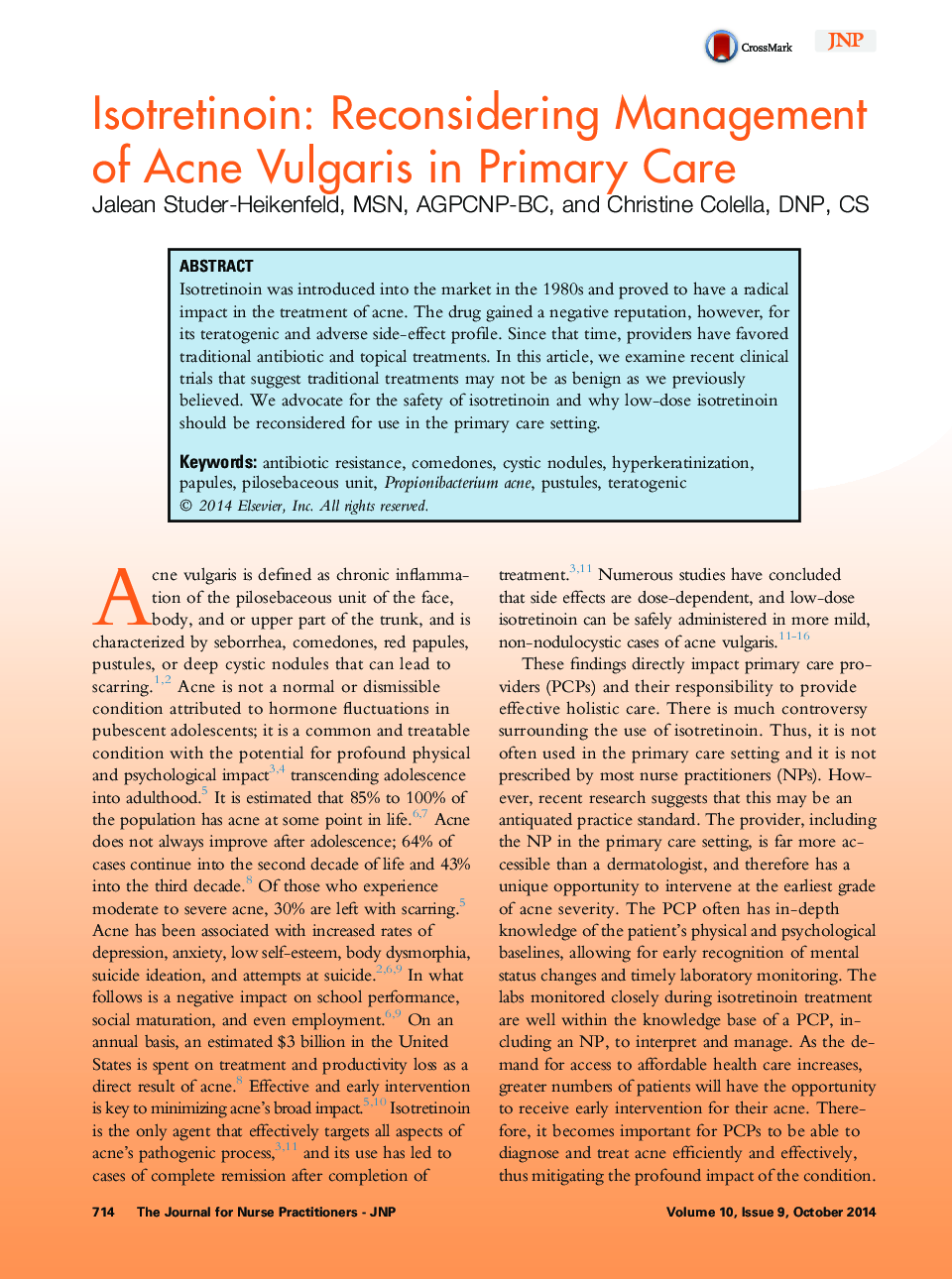| Article ID | Journal | Published Year | Pages | File Type |
|---|---|---|---|---|
| 2663613 | The Journal for Nurse Practitioners | 2014 | 7 Pages |
•Isotretinoin is the most effective treatment targeting all 4 mechanisms of acne formation. Emerging research suggests that lower doses of isotretinoin initiated during the mild to moderate stages can yield early and equally effective long-term results as previously prescribed higher doses, but with a safer side-effect profile.•PCPs have traditionally favored topical and oral antibiotic regimens, thus delaying early effective treatment. These treatments have many potentially severe side effects of their own, including contribution to the increasing threat of antibiotic resistance.•Due to accessibility and comprehensive understanding of the patient’s physical and psychological history, providers in the primary-care setting have the unique advantage of appropriately selecting patients for treatment, providing prompt dose adjustments, and offering thorough laboratory monitoring that is at least as effective as that of dermatology specialists.•As the paradigm of health care shifts, more patients have access to medical care and will be seen in the primary-care setting for acne. It is the responsibility of the PCP to be astutely aware of the most current data and to challenge antiquated norms of practice, thus mitigating acne’s physical, psychological, and economic impact over the lifespan of the patient.
Isotretinoin was introduced into the market in the 1980s and proved to have a radical impact in the treatment of acne. The drug gained a negative reputation, however, for its teratogenic and adverse side-effect profile. Since that time, providers have favored traditional antibiotic and topical treatments. In this article, we examine recent clinical trials that suggest traditional treatments may not be as benign as we previously believed. We advocate for the safety of isotretinoin and why low-dose isotretinoin should be reconsidered for use in the primary care setting.
